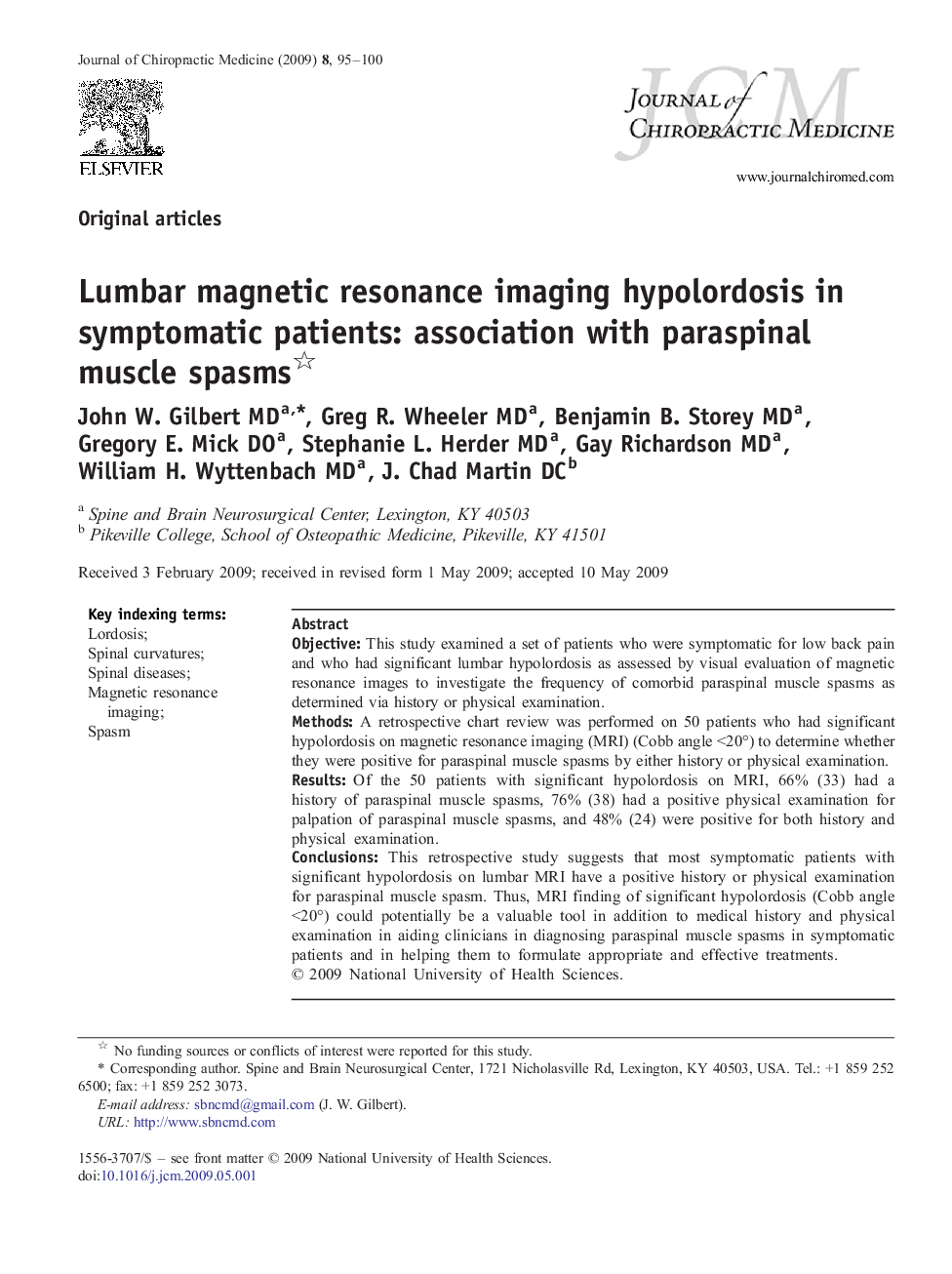| Article ID | Journal | Published Year | Pages | File Type |
|---|---|---|---|---|
| 2620306 | Journal of Chiropractic Medicine | 2009 | 6 Pages |
ObjectiveThis study examined a set of patients who were symptomatic for low back pain and who had significant lumbar hypolordosis as assessed by visual evaluation of magnetic resonance images to investigate the frequency of comorbid paraspinal muscle spasms as determined via history or physical examination.MethodsA retrospective chart review was performed on 50 patients who had significant hypolordosis on magnetic resonance imaging (MRI) (Cobb angle <20°) to determine whether they were positive for paraspinal muscle spasms by either history or physical examination.ResultsOf the 50 patients with significant hypolordosis on MRI, 66% (33) had a history of paraspinal muscle spasms, 76% (38) had a positive physical examination for palpation of paraspinal muscle spasms, and 48% (24) were positive for both history and physical examination.ConclusionsThis retrospective study suggests that most symptomatic patients with significant hypolordosis on lumbar MRI have a positive history or physical examination for paraspinal muscle spasm. Thus, MRI finding of significant hypolordosis (Cobb angle <20°) could potentially be a valuable tool in addition to medical history and physical examination in aiding clinicians in diagnosing paraspinal muscle spasms in symptomatic patients and in helping them to formulate appropriate and effective treatments.
